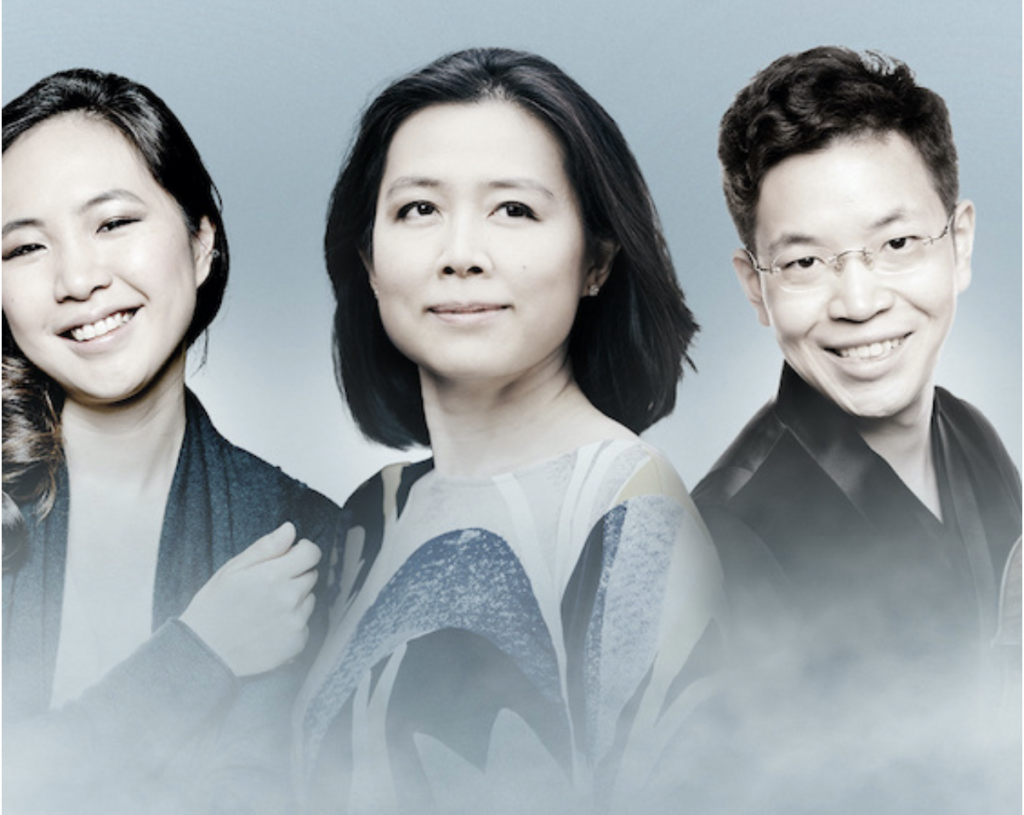by Kevin McLaughlin

Seemingly beloved of violinists everywhere, the French composer Jean-Marie Leclair set the tone with the ear-friendly Sonata in e, scored for two unaccompanied violins. This Baroque duet allowed the players to distinguish themselves individually, sharing lead roles whenever a section was repeated. The middle Gavotte movement was elegant and unrushed. The final Presto showed off the duo’s flexible phrasing and light tone. The two complemented (without competing against) one another in sound and pace, resulting in an astonishing level of virtuosity.
Next, pianist Amy Yang entered, happy to join Huang and Um for Moritz Moszkowski’s Suite for Violins and Piano, Op. 71. Moszkowski, who died at 70 in 1925, was most famous as a pianist in his day and wrote his best music for his own instrument (there’s a terrific e-minor piano concerto that deserves much more attention).
But in this suite the piano is subsidiary. The “Allegro energico” shows right away who’s in charge as the two solo violins match thematic fragments in close echo, leaving the piano to shadow along. Here is a violinist’s red meat, and Huang and Um sunk every bicuspid and molar into Moszkowski’s thick romantic lines. The minuet, on the other hand, is a Vienna sachertorte of a movement. It allowed the pair to collaborate on more sentimental material, topped off by a dollop of cute pizzicati in the final measures.
A love duet between the violins followed, but one rendered without too much vibrato or bow pressure (evidently, to keep the movement on a purely professional level). And in the final tarantella, Yang’s accompaniment provided a solid backbone against Um and Huang’s playful dialogue. All players were well synchronized for the accelerating stretta at the end, making for a satisfying close.
The summer-festival atmosphere again surfaced after the intermission when Paul Huang supplied spoken commentary from the stage. He thanked the hosts and described the rationale and arc of the concert. He also warned the audience of the two contemporary works coming up, but in such a charming way we were ready and eager to hear them. If only more performers would break the fourth wall like this during concerts! The audience craves the attention and our capacity and disposition to listen goes way up.
The Chris Rogerson piece, Afterward, written for and premiered by Huang and Um, is an emotional work, composed in 2020 partly in response to the death of the great singer Jessye Norman. It is a final contemplation of life that recalls Richard Strauss’s Four Last Songs. The trio gave a confident performance, capturing all of its spellbinding and ghostly beauty.
In Hébraïque élégie, composer Amy Barlowe has written a hypnotic and emotionally searing work for two violins as a tribute to her father, who passed away in 2000. The sympathetic performance showed the players well understood the irony evident in the work’s juxtaposition of the joyous dance opening followed by the wrenching, Kaddish-like cadenza, expressing the inevitable passing from life to death.
As Paul Huang described it, Pablo de Sarasate’s splashy Navarro is a tightly choreographed work for the two violins, reminiscent of synchronized ice-dancing. What a lot of fun this big finish was, but with hair-raising virtuosic demands. It was a perfect end to this (not-)summer performance. After four bows the trio finally said good night, and the audience was sent home excited and happy.
Published on ClevelandClassical.com February 28, 2023.
Click here for a printable copy of this article



